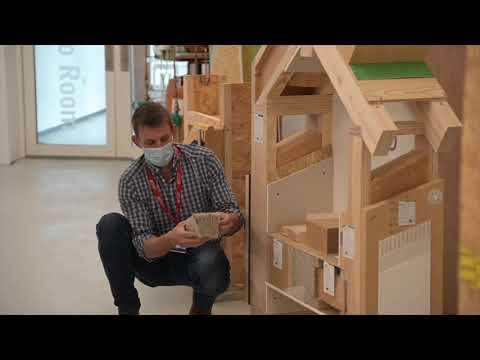Civil Engineering is a multi-faceted career with a basis in the design, construction and maintenance of the built environment.
Future Civil Engineers will be instrumental for Scotland reaching its ambitious target of carbon net-zero by 2045, five years earlier than the rest of the UK. This is to reduce the global temperature which is currently accelerating. Engineers will need to design and build structures to cope with the worsening weather predicted for the next 30 years until the trend of rising temperatures lowers.
70% of global carbon emissions are produced from infrastructure, basically how we live and how we move around, so as Civil Engineers we can engineer out many of the problems.
Students in Civil Engineering will be required to learn how to calculate the whole life carbon of a new structure and how to alter existing builds to meet new goals in the reduction of their carbon footprint.
What does Borders College offer within the Foundation Apprenticeship course?
This is an ideal introduction for those with a passion for construction or environmental engineering to gain qualifications relevant to the chosen career as an alternative to extra school subjects.
The course does have a mathematical element with more emphasis on applied mathematics including structures and structural analysis, involving calculations related to forces in equilibrium, also calculating complete stresses and strains in a construction context.
Most of the mathematics will be familiar including applying and using Pythagoras theorem, using sin, cos and tan to solve construction problems, using formulae to calculate areas and volumes in construction and constructing graphs.
Also included in the course will be:
- Surveying from large scale ordnance survey maps to small scale site plans. This will also introduce levelling surveys and creating contour plans.
- Sitework will introduce the planning and establishing domestic substructure construction, offering the methods and the plant used. Also understanding frames both steel and concrete and the methods of construction of retaining walls.
- Health and safety is delivered relevant to the building sector covering fire and accidents in the workplace, explaining the importance of safety awareness in the construction industry, learning safe working practices and emergency procedures and also identifying occupational health problems.
- Materials is an introduction to the understanding of materials properties, in the production and testing of materials.
- AutoCAD teaches sample construction drawings developing graphical presentational presentation skills to communicate effectively members of your professional team.
The course will also include group work challenges using the knowledge, skills and using effective self-study to research and deliver both reports and presentation skills gained through study, another unit provides the opportunity through placement a chance to work with employers to gain an understanding of using knowledge in the workplace.
This course would be an ideal starting point for those wishing to progress to university to continue studying Civil Engineering or other construction-based degrees but would also benefit those aiming for a career in the building sector whether it's surveying, estimating, costing, supervisory roles or construction industry technicians.
Click here for course information.


